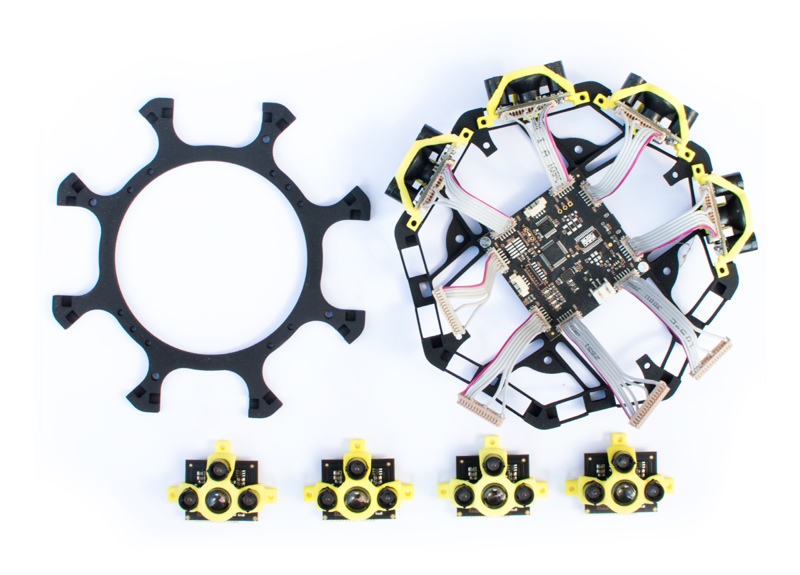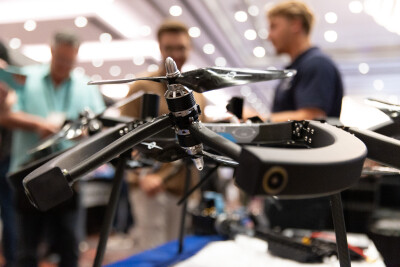For proof that LiDAR sensors are becoming a commodity, you’d be hard pressed to find a better example than Terabee. The company was born out of a long-term collaboration with CERN (the European Center for Nuclear Research) to transform “measurement sensing for robotics and drones.” And they’re doing it by supplying low-cost and easy-to-use LiDAR.
The company’s flagship product, the TR1 2D LiDAR, is small (see above) and inexpensive. This makes it perfect for use in DIY applications, or robotics. You can see the sensor in action for a drone sense-and-avoid demo during Intel’s 2015 CES keynote.

TeraRanger Tower assembly kit
TeraBee’s newest product, the TeraRanger Tower, is a creative implementation of that sensor: they put an array of eight on a stationary hub. The product is designed to scan quickly enough (270hz) for real-time use in applications like simultaneous localization and mapping (SLAM) and collision avoidance for fast-moving robots like, say, drones. The Tower has a weight of only 130g, a diameter of 150mm, and a range of 0.2-14 meters. Perfect for a drone, or an autonomous indoor scanning robot.
As for price, it costs less than 1000 Euro. You can also buy a tower with four sensors for a little over 500 euro. The package comes as a self-assembly kit and “takes less than 10 minutes to build.” If you find it too complex, the website includes a video tutorial. For those of you on Windows, the kit includes a free graphical user interface that visualizes the distances being captured by the sensors and allows you to change parameters with a few mouse clicks.
We’ve known for a long time that LiDAR is a very powerful tool. Now, with affordable, commoditized sensors like the ones from TeraBee, we’ll finally start seeing people use it for applications we never expected.






